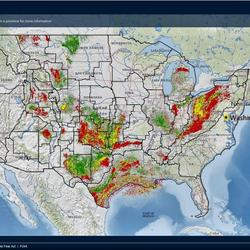Research
Gulf Coast Framework Studies, Geochemistry, Geologic CO2 Utilization, Economics, Environmental Aspects, and more
Energy Resources Program
The Energy Resources Program conducts research and assessments to advance the understanding of the Nation’s energy resources. We study processes critical to the formation, accumulation, occurrence and alteration of geologically based energy resources; prepare resource assessments; and evaluate the environmental and socioeconomic effects of energy resource occurrence, production and use.






